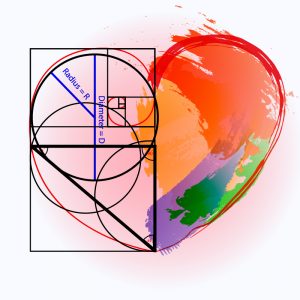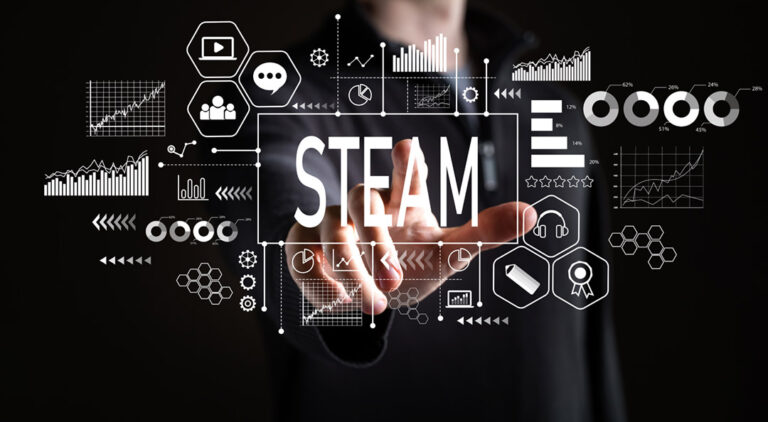Integrating science, math into arts, humanities courses
In a recent Teaching Tip, UAF associate professor Mary Beth Leigh gave examples of how she integrated art and humanities into her science classroom. The same process of transdisciplinary course integration can happen in arts and humanities classes by including mathematics and science into course activities. The practice of incorporating aspects of science, technology, engineering, art and mathematics (STEAM) into curriculum is the focus of The Integration of the Humanities and Arts with Sciences, Engineering, and Medicine in Higher Education by the National Academy of Sciences.

An obvious transdisciplinary integration happens in mathematics and art. Without mathematics, artists would have a hard time relating perspective, proportion or applying the golden ratio to their work. This is demonstrated through a collaborative work by Luca Pacioli and Leonardo da Vinci titled, De divina proportione printed in the 1500s. The study of mathematics carried over with other master artists like Piero della Francesca with geometry and M.C. Escher with tessellation and polyhedra. In the article Catastrophically creative: Salvador Dalà and Maths, Silvia Benvenuti wrote:
Paraphrasing, Dalà suggests to the young artist a “recipe” for beauty: put close geometric constraints at the base of a picture, and then let your creativity flow, sure that the result will be aestetically (sic) harmonic and nice to see. (Benvenuti, 2017)
You can see further integration of mathematics and science in music. Scales, rhythm, tone, pitch, and harmonics are just a few examples of many connections. In the video Music and Mathematics, Eugenia Cheng, a pianist and mathematician, talks about how Bach was able to write music in every key, based on a mathematical solution. An understanding of physics may help with understanding musical harmonics specifically with electronic music.
If you take a look at the current General Education Requirements (GER) for a baccalaureate degree at UAF (pdf), most of the Humanities credit options come from enrolling in language classes, which speaks to the phenomenon of technology bringing the world together where becoming a global citizen will be increasingly important. Furthermore, as industry is making fast strides in using machine language and artificial intelligence to enhance our everyday activities, being familiar with another language, including coding, may well give a graduating student a step up in getting a job and being part of this evolving technology. In addition to integrating aspects of culture and history into language courses which are already in practice, topics related to mathematics, weather, economics, scientific achievements, or indigenous ways of knowing within the culture can all be themes for discussion and inquiry that relate to STEAM.
A transdisciplinary objective is not only about learning skills or about applying skills to a completely different situation, but also an opportunity to have profound conversations about ethics, logic, and reasoning that connects all disciplines. There is plenty of room for philosophical discussions in all fields related to STEAM . As the curriculum in higher education has become more specialized, it is important to be open to including transdisciplinary concepts into all courses.
So what does this mean for you as a teacher?
- Look at your detailed class list in UAOnline and see what discipline your students are coming from.
- Prepare in advance for how you might engage those students outside of your discipline.
- Talk to a colleague in a different discipline and trade curriculum ideas to integrate strengths from each field into class activities.
- Take it one step farther and develop a co-listed course where students are able to integrate both subjects into a combined and holistic outcome.
Visit one of UAF CTL’s open labs to brainstorm ideas about how you might work with STEAM and see a new population of students who are motivated and engaged, and perhaps, grow opportunities for double majors!
Resources
B., V. (2016). De divina proportione. On Art and Aesthetics.
Barnhard, R. and Kawagley A. O. (2005.) Indigenous Knowledge Systems/Alaska Native Ways of Knowing. Anthropology and Education Quarterly, 36(1), pp. 8-23.
Benvenuti, S. (2017). Catastrophically creative: Salvador Dalà and Maths. Mathematics in Europe.eu.
Burton-Hill, C. (2018.)The sounds of science: how physics and music can help each other. Financial Times. Ft.com.
Fisher, C. (2011). How Can World Language Instruction Complement Other Subjects in School? Calico Spanish. Calico Spanish. Geometry in Art & Architecture Unit 13. (2018). Dartmouth.edu.
Gross, R. (2015). What is the golden ratio? What you need to know and how to use it. Canva Design Elements & Principles.
Halpern, P., & contributor, O. (2014). Quantum Harmonies: Modern Physics and Music – The Nature of Reality – The Nature of Reality | PBS. Pbs.org.
Kaczmarek, A. (2015). 35 Lessons that Explore the Beautiful Pairing of Math and Art – The Art of Education.
Messick, K. (2014). The Harmonious Aesthetics of STEM and Philosophy. Online Learning Tips.
Mathematics and Music. (2018.) American Mathematical Society. Ams.org. Morgan, J. (2007.)Visual mathematics — math for art students. Divert. Music and Mathematics. (2018). YouTube.
National Academies of Sciences, Engineering, and Medicine. 2018. The Integration of the Humanities and Arts with Sciences, Engineering, and Medicine in Higher Education: Branches from the Same Tree. Washington, DC: The National Academies Press. The Mathematical Art of M.C. Escher. (2018). Platonicrealms.com.



